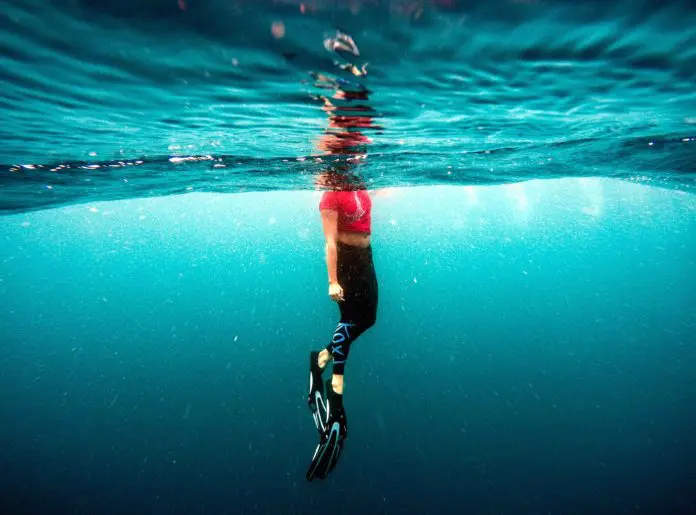The freefall is arguably one of the best parts of freediving for depth. It is the essence of letting go, of bringing all movement to an end, of surrendering yourself to gravity and to the sea. After the constant movement and struggle of reaching negative buoyancy, finally achieving those seconds of freefalling peace is a feeling many of us live for. But the freefall is not as easy as it sounds and perfecting it in order to become more efficient, especially when training for depth, is a trial-and-error process that can be quite confusing. Do we streamline for a faster freefall, and save on precious dive time? Or do we reduce streamlining efficiency and relax our bodies in order to increase our failure depth and protect ourselves from injuries?
Streamlining
What is streamlining? Picture an underwater torpedo. It is created with the sole purpose of efficiency, gliding through the sea effortlessly, with as much reduced drag as possible. Picture the shape of the torpedo. It is completely straight, elongated, and with a rounded head. This is what freedivers emulate in order to have perfect streamlining. Your face should be facing the line, arms at your sides, with a straight back, and slightly bent knees so that your fins are pointing towards the surface, or straight-legged with pointed feet if you are training without fins.
The pros of streamlining are reduced dive time and potentially deeper dives. The more streamlined you are, the faster you will cut through the water, and if dive time is an issue for you, this technique can save you precious seconds, and allow you to go deeper barring other issues such as equalization. So why doesn’t everyone streamline during their freefall? Well, for one, keeping your muscles tensed can burn more oxygen, and also reduces relaxation. More importantly, when your body is tense, it prevents your flexible air spaces from compressing under pressure, which can increase the risk of barotrauma.
Relaxed Posture
Freefalling in a relaxed posture is more common amongst freedivers. It involves tucking your chin in slightly, relaxing your shoulders and curving them forward, leaving your arms loose at your sides, relaxing your legs, yet keeping them close together, and slightly bent at hips and knees so that your fins are pointing up. However, curving your back too much, stretching your head and neck to look towards the bottom weight, and bending your knees too much can negatively impact your freefall, creating drag and slowing it down, and/or curving your body closer into or farther away from the line.
The pros of relaxed posture while freefalling include, quite obviously, staying relaxed during this crucial part of your dive, conserving oxygen by reducing muscle tension, protecting the body against injuries by allowing your internal organs to move more freely without being held taut by muscle tension, and increasing your failure depth if you are equalizing using the Frenzel technique.
Which technique should you use?
The truth is, there is no concrete answer to this question. Freefall is very personal to every freediver; some are flexible enough to streamline without being prone to injuries, others reduce streamlining by keeping their hands around the rope or carabiner. Some freedivers may rather shave off seconds of their dive time by streamlining, others may feel comfortable freefalling in a relaxed posture with prolonged dive time. The truth is, most freedivers go through a trial-and-error process that includes multiple different versions of freefalling, until they can find a combination between streamlining and relaxed posture that works for them.
Freefalling is not an exact science, just as many other aspects of freediving; you should avoid trying to copy.

